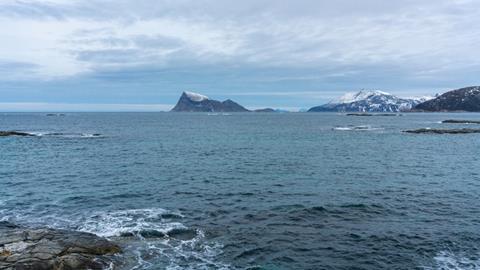In a study published in Nature, Dutch researchers estimated that there are 27 million tonnes of nanoplastics in the ocean’s upper layer. This figure equals or exceeds the estimated amount of macro- and microplastics in the world’s oceans.
Over the past twenty years, the issue of plastic pollution in the oceans has received increasing academic attention. It is estimated that there are currently 4 million tonnes of microplastics in the world’s oceans. These are pieces of plastic that are large enough to float or sink. Nanoplastics, on the other hand, are so small that they ‘dissolve’ in the water and can therefore be found throughout the water column. This makes measuring nanoplastic concentrations much more complicated.
Researchers from Utrecht University and the Royal Netherlands Institute for Sea Research (NIOZ) have now measured the concentration of nanoplastics in a cross-section of the North Atlantic Ocean, from the subtropical gyre to the North European shelf. Based on these measurements, they estimate that the top 200 metres of the North Atlantic Ocean contains around 27 million tonnes of nanoplastics. Biogeochemist Helge Niemann of NIOZ led the research. ‘Our findings suggest that there are eight times more nanoplastics in the North Atlantic than microplastics in the world’s oceans.’
Microbes
Niemann is not surprised that the concentration of nanoplastics is this high. ‘Plastics break down into smaller and smaller pieces through degradation and sunlight, so it is very likely that microplastics eventually decay into nanoplastics.’
The exact consequences of all these nanoplastics are difficult to determine, but several studies show that they have adverse effects. ‘Nanoplastics are so small that they interact with the membrane of microbes, which may be detrimental to their growth and role in the food chain’, says Niemann. ’In addition, nanoplastics can cross the blood-brain barrier. For instance, it has been demonstrated that fish alter their behaviour when exposed to significant quantities of nanoplastics.’
Challenging logistics
In order to take their measurements, the researchers sailed across the subtropical Atlantic Ocean, stopping at twelve stations along the way. At each station, they collected water samples from the upper, middle, and lower layers of the ocean. Using a depth sensor, they lowered a collection of open bottles and closed them electronically from a distance once they had reached the required depth. At the surface, they poured the water into extremely clean bottles, taking care to avoid atmospheric contamination. ‘To determine how much contamination occurred during this process, we also measured the concentration of nanoplastics in control samples – bottles without water.’
Once on land, a team of interdisciplinary researchers determined the concentration of nanoplastics in the bottles. While microplastics are often measured using light-based techniques, nanoplastics are approximately the same size as the wavelength of light, making them invisible. The researchers solved this problem using mass spectrometry. As this technique can distinguish nanoplastics from the organic background, the researchers were able to determine the amount of nanoplastics in each sample and extrapolate this figure to cover the entire ocean.
‘A major challenge was ensuring that our results were not contaminated’, says Niemann. ‘That’s why we took two to three times as many control samples as actual samples.’ A boat is not the cleanest laboratory environment. In addition, the logistics of the cruise were challenging. We went out to sea from November to December, which is not ideal weather-wise if you want to collect uncontaminated water.’
Survival time
As a next step, Niemann wants to investigate whether other oceans around the world have similar concentrations of nanoplastics. ’We want to get a global picture. It’s almost inevitable that there are also large amounts of nanoplastics in other oceans.
They also want to study the fate of these nanoplastics. ‘What impact do these nanoparticles have on the ocean’s microbiome? How long do they ’live’ before they disappear? Are there microbes that can break down nanoplastics? In order to investigate the dynamics of this pollution, we plan to conduct several expeditions in the coming years.’
Sophie ten Hietbrink, Dušan Materić et al., ‘Nanoplastic concentration across the North Atlantic’, Nature, 2025, doi:10.1038/s41586-025-09218-1.













Nog geen opmerkingen